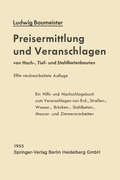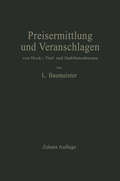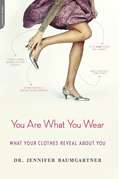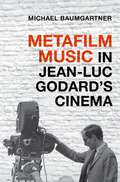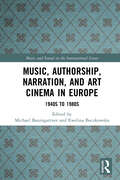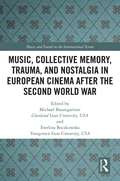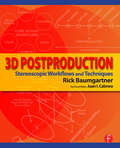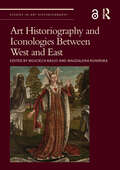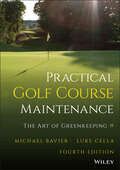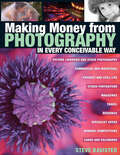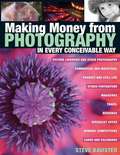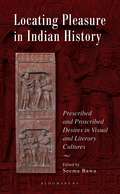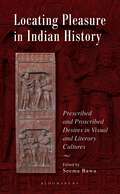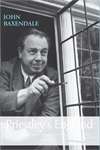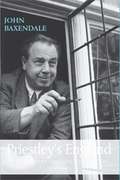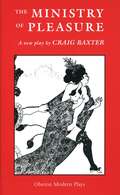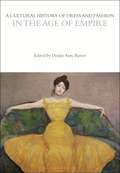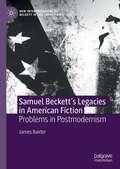- Table View
- List View
SeaCities: Aquatic Urbanism (Cities Research Series)
by Joerg Baumeister Ioana C. Giurgiu Despina Linaraki Daniela A. OttmannThis book highlights the research outcome of Cities Research Institute's SeaCities group at Griffith University and a panel with the same title which took place at the World Expo in Dubai 2021/22 supported by the UN. It reflects on topics which are relevant for a future aquatic urbanism like the evolution of a taxonomy for aquatic urbanism, island and ecological wetland development, the planning aspects of seascapes, as well as drivers for floating communities and aquacultural urbanism. The book broadens the perspective of the previous book "SeaCities: Urban Tactics for Sea-Level Rise" published in 2021 from a terrestrial towards an amphibious and aquatic understanding of future city development.
Preisermittlung und Veranschlagen von Hoch-, Tief- und Stahlbetonbauten: Ein Hilfs- und Nachschlagebuch zum Veranschlagen von Erd-, Straßen-, Wasser-, Brücken-, Stahlbeton-, Maurer- und Zimmererarbeiten
by Ludwig BaumeisterPreisermittlung und Veranschlagen von Hoch-, Tief- und Stahlbetonbauten: Ein Hilfs- und Nachschlagebuch zum Veranschlagen von Erd-, Straßen-, Wasser- und Brücken-, Stahlbeton-, Maurer- und Zimmerarbeiten
by Ludwig BaumeisterYou Are What You Wear: What Your Clothes Reveal About You
by Jennifer BaumgartnerMost every woman has found herself with a closet full of too many clothes or surrounded by brand-new items that somehow never get worn. Instead she gets stuck wearing the same few familiar pieces from a wardrobe that just doesn't feel "right." Dr. Jennifer Baumgartner argues that all those things are actually manifestations of deeper life issues.What if you could understand your appearance as a representation of your inner unresolved conflicts and then assemble a wardrobe to match the way you wish to be perceived? In this fashion guide that is like no other, Dr. Baumgartner helps readers identify the psychology behind their choices, so they can not only develop a personal style that suits their identity but also make positive changes in all areas of life.
You Are What You Wear: What Your Clothes Reveal About You
by Jennifer BaumgartnerMost every woman has found herself with a closet full of too many clothes or surrounded by brand-new items that somehow never get worn. Instead she gets stuck wearing the same few familiar pieces from a wardrobe that just doesn't feel "right." Dr. Jennifer Baumgartner argues that all those things are actually manifestations of deeper life issues.What if you could understand your appearance as a representation of your inner unresolved conflicts and then assemble a wardrobe to match the way you wish to be perceived? In this fashion guide that is like no other, Dr. Baumgartner helps readers identify the psychology behind their choices, so they can not only develop a personal style that suits their identity but also make positive changes in all areas of life.
Metafilm Music in Jean-Luc Godard's Cinema (Oxford Music / Media)
by Michael BaumgartnerHailed as a leading innovator of visual montage, unique storytelling style, and ground-breaking cinematography, Jean-Luc Godard is a prominent pioneer in sculpting complex soundtracks altering the familiar relationship between sound and image, but his achievements in sound have been largely overlooked. Such a lacuna in the extensive research on Godard's work is unfortunate, as Godard's lifelong preoccupation of exploring self-reflexively all aspects of filmmaking particularly affects film music. With the novel approach of metafilm music, extrapolated from Jean-Luc Godard's oeuvre, this book not only closes up a crucial gap in Godard research, but also offers detailed analyses of the music as metafilm music in Contempt, Alphaville, Band of Outsiders, Pierrot le fou, First Name: Carmen, Histoire(s) du cinéma, among other films and video productions. The innovative scholarly concept of metafilm music, enriching the burgeoning field of music in audio-visual media, describes how Godard thinks about film music with film music. This book thus provides a thorough examination of Godard's self-reflexive approach to film music which has resulted in a lifelong creation of multi-layered soundtracks pushing the envelope of film music and sound to the limit.
Metafilm Music in Jean-Luc Godard's Cinema (Oxford Music / Media)
by Michael BaumgartnerHailed as a leading innovator of visual montage, unique storytelling style, and ground-breaking cinematography, Jean-Luc Godard is a prominent pioneer in sculpting complex soundtracks altering the familiar relationship between sound and image, but his achievements in sound have been largely overlooked. Such a lacuna in the extensive research on Godard's work is unfortunate, as Godard's lifelong preoccupation of exploring self-reflexively all aspects of filmmaking particularly affects film music. With the novel approach of metafilm music, extrapolated from Jean-Luc Godard's oeuvre, this book not only closes up a crucial gap in Godard research, but also offers detailed analyses of the music as metafilm music in Contempt, Alphaville, Band of Outsiders, Pierrot le fou, First Name: Carmen, Histoire(s) du cinéma, among other films and video productions. The innovative scholarly concept of metafilm music, enriching the burgeoning field of music in audio-visual media, describes how Godard thinks about film music with film music. This book thus provides a thorough examination of Godard's self-reflexive approach to film music which has resulted in a lifelong creation of multi-layered soundtracks pushing the envelope of film music and sound to the limit.
Music, Authorship, Narration, and Art Cinema in Europe: 1940s to 1980s (Music and Sound on the International Screen)
by Michael Baumgartner Ewelina BoczkowskaMusic, Authorship, Narration, and Art Cinema in Europe: 1940s to 1980s investigates the function of music in European cinema after the Second World War up to the fall of the Berlin wall, a period when composers and directors embraced experimentation. Through analyses of music and sound in a wide range of iconic films from across Europe, the essays in this book provide a nuanced reconsideration of three core themes: auteur theory, art house film, and national cinema. Chapters written by an international array of contributors focus on case studies of music in the cinema of Carlos Saura, Jean-Pierre Melville, the Polish School, and Romanian directors, as well as collaborations between directors and composers, including Michelangelo Antonioni and Giovanni Fusco, Federico Fellini and Nino Rota, Leo Arnshtam and Dmitry Shostakovich, and Peter Greenaway and Michael Nyman. The contributors shift the emphasis from a director-centered view to the working relationship between director and composer, and from the visual component to the sonic aspects of these films, without ignoring the close correlation between soundtrack and visual elements. Enriching our understanding of the complex, intertwined nature of authorship in film, the role of film music, and sound, nation-state and art cinema, and European cinematic history, this volume offers a valuable addition to research across music and film studies.
Music, Authorship, Narration, and Art Cinema in Europe: 1940s to 1980s (Music and Sound on the International Screen)
by Michael Baumgartner Ewelina BoczkowskaMusic, Authorship, Narration, and Art Cinema in Europe: 1940s to 1980s investigates the function of music in European cinema after the Second World War up to the fall of the Berlin wall, a period when composers and directors embraced experimentation. Through analyses of music and sound in a wide range of iconic films from across Europe, the essays in this book provide a nuanced reconsideration of three core themes: auteur theory, art house film, and national cinema. Chapters written by an international array of contributors focus on case studies of music in the cinema of Carlos Saura, Jean-Pierre Melville, the Polish School, and Romanian directors, as well as collaborations between directors and composers, including Michelangelo Antonioni and Giovanni Fusco, Federico Fellini and Nino Rota, Leo Arnshtam and Dmitry Shostakovich, and Peter Greenaway and Michael Nyman. The contributors shift the emphasis from a director-centered view to the working relationship between director and composer, and from the visual component to the sonic aspects of these films, without ignoring the close correlation between soundtrack and visual elements. Enriching our understanding of the complex, intertwined nature of authorship in film, the role of film music, and sound, nation-state and art cinema, and European cinematic history, this volume offers a valuable addition to research across music and film studies.
Music, Collective Memory, Trauma, and Nostalgia in European Cinema after the Second World War (Music and Sound on the International Screen)
by Michael Baumgartner Ewelina BoczkowskaIn the wake of World War II, the arts and culture of Europe became a site where the devastating events of the 20th century were remembered and understood. Exploring one of the most integral elements of the cinematic experience—music—the essays in this volume consider the numerous ways in which post-war European cinema dealt with memory, trauma and nostalgia, showing how the music of these films shaped the representation of the past. The contributors consider films from the United Kingdom, Poland, the Soviet Union, France, Italy, Germany, Sweden, Austria, and the Netherlands, providing a diverse and well-rounded understanding of film music in the context of historical memory. Memory is often underrepresented within scholarly musical studies, with most of these applications found in the disciplines of ethnomusicology, popular music studies, music cognition, and psychology and music therapy. Likewise, trauma has mainly been studied in relation to music in only a few historical contexts, while nostalgia has attracted even less academic attention. In three parts, this volume addresses each area of study as it relates to the music of European cinema from 1945 to 1989, applying an interdisciplinary approach to investigate how films use music to negotiate the precarious relationships we maintain with the past. Music, Collective Memory, Trauma, and Nostalgia in European Cinema after the Second World War offers compelling arguments as to what makes music such a powerful medium for memory, trauma and nostalgia.
Music, Collective Memory, Trauma, and Nostalgia in European Cinema after the Second World War (Music and Sound on the International Screen)
by Michael Baumgartner Ewelina BoczkowskaIn the wake of World War II, the arts and culture of Europe became a site where the devastating events of the 20th century were remembered and understood. Exploring one of the most integral elements of the cinematic experience—music—the essays in this volume consider the numerous ways in which post-war European cinema dealt with memory, trauma and nostalgia, showing how the music of these films shaped the representation of the past. The contributors consider films from the United Kingdom, Poland, the Soviet Union, France, Italy, Germany, Sweden, Austria, and the Netherlands, providing a diverse and well-rounded understanding of film music in the context of historical memory. Memory is often underrepresented within scholarly musical studies, with most of these applications found in the disciplines of ethnomusicology, popular music studies, music cognition, and psychology and music therapy. Likewise, trauma has mainly been studied in relation to music in only a few historical contexts, while nostalgia has attracted even less academic attention. In three parts, this volume addresses each area of study as it relates to the music of European cinema from 1945 to 1989, applying an interdisciplinary approach to investigate how films use music to negotiate the precarious relationships we maintain with the past. Music, Collective Memory, Trauma, and Nostalgia in European Cinema after the Second World War offers compelling arguments as to what makes music such a powerful medium for memory, trauma and nostalgia.
3D Postproduction: Stereoscopic Workflows and Techniques
by Rick BaumgartnerMaster the complex realities of 3D postproduction workflows and solutions with this one-of-a-kind guide. Brimming with techniques that have been used on actual 3D productions and can easily be incorporated into your own workflows, Rick Baumgartner’s 3D Postproduction offers you: The best practices for 3D preproduction and production to ensure a smooth post process, saving both time and money Abundant workflow diagrams, screen grabs, and checklists to reinforce your learning with visual cues Common postproduction considerations such as dailies, assembly, cutting, and color correction, and how they differ between 3D and 2D post pipelines Examples of 3D gone bad and how those scenarios can be avoided In-depth interviews with working professionals and extensive tutorials that provide practical insight from the trenches of real-world 3D postproduction A companion website (www.focalpress.com/cw/baumgartner) featuring project files and video clips demonstrating the 3D workflows covered in the book An effective 3D postproduction workflow allows for easier and more flexible editing, greater capacity for visual effects enhancement, the ability to fix production mistakes, and much more. You can’t afford to miss out! Bring your 3D projects to the next level with 3D Postproduction: Stereoscopic Workflows and Techniques.
3D Postproduction: Stereoscopic Workflows and Techniques
by Rick BaumgartnerMaster the complex realities of 3D postproduction workflows and solutions with this one-of-a-kind guide. Brimming with techniques that have been used on actual 3D productions and can easily be incorporated into your own workflows, Rick Baumgartner’s 3D Postproduction offers you: The best practices for 3D preproduction and production to ensure a smooth post process, saving both time and money Abundant workflow diagrams, screen grabs, and checklists to reinforce your learning with visual cues Common postproduction considerations such as dailies, assembly, cutting, and color correction, and how they differ between 3D and 2D post pipelines Examples of 3D gone bad and how those scenarios can be avoided In-depth interviews with working professionals and extensive tutorials that provide practical insight from the trenches of real-world 3D postproduction A companion website (www.focalpress.com/cw/baumgartner) featuring project files and video clips demonstrating the 3D workflows covered in the book An effective 3D postproduction workflow allows for easier and more flexible editing, greater capacity for visual effects enhancement, the ability to fix production mistakes, and much more. You can’t afford to miss out! Bring your 3D projects to the next level with 3D Postproduction: Stereoscopic Workflows and Techniques.
Art Historiography and Iconologies Between West and East (ISSN)
by Wojciech Bałus Magdalena KunińskaThis volume explores a basic question in the historiography of art: the extent to which iconology was a homogenous research method in its own immutable right. By contributing to the rejection of the universalizing narrative, these case studies argue that there were many strands of iconology.Methods that differed from the ‘canonised’ approach of Panofsky were proposed by Godefridus Johannes Hoogewerff and Hans Sedlmayr. Researchers affiliated with the Warburg Institute in London also chose to distance themselves from Panofsky’s work. Poland, in turn, was the breeding ground for yet another distinct variety of iconology. In Communist Czechoslovakia there were attempts to develop a ‘Marxist iconology’. This book, written by recognized experts in the field, examines these and other major strands of iconology, telling the tale of iconology’s reception in the countries formerly behind the Iron Curtain. Attitudes there ranged from enthusiastic acceptance in Poland, to critical reception in the Soviet Union, to reinterpretation in Czechoslovakia and the German Democratic Republic, and, finally, to outright rejection in Romania.The book will be of interest to scholars working in art history, visual studies, and historiography.
Practical Golf Course Maintenance: The Art of Greenkeeping
by Michael Bavier Luke CellaA Practical Step-by-Step Guide to Maintaining and Operating a Golf Course From the fairway to the flagsticks, operating a golf course presents a variety of challenges. To maintain a beautiful course and ensure smooth day-to-day operations, one must possess a strong foundation of knowledge across many different fields. Practical Golf Course Maintenance, Fourth Edition assists golf industry professionals with every component of course management so that players have the best experience possible. As seasoned golf industry professionals, the two authors have years of hands-on experience in the field solving problems relating to every facet of running a modern golf course. This fourth edition contains new and updated advice and guidelines for running a golf course, including: A new chapter offering guidance for superintendents to work with club officials and green committee members to achieve success in their challenging roles Rule changes from the USGA and R&A and how they affect maintenance strategies Discussions of current and future course technologies, including robotic mowers, drones, and advanced irrigation systems An overview of the evolving job descriptions and responsibilities of key positions in the field A common sense approach to the art of greenkeepingPractical Golf Course Maintenance, Fourth Edition has been purposefully written to provide useful information to both the untrained and experienced greenkeeping professional. It serves as a thorough introduction of golf course maintenance to anyone interested in the profession, including course or club officials and managers, green committee members, and anyone who has a vested interest in understanding what it takes to run a golf course.
Practical Golf Course Maintenance: The Art of Greenkeeping
by Michael Bavier Luke CellaA Practical Step-by-Step Guide to Maintaining and Operating a Golf Course From the fairway to the flagsticks, operating a golf course presents a variety of challenges. To maintain a beautiful course and ensure smooth day-to-day operations, one must possess a strong foundation of knowledge across many different fields. Practical Golf Course Maintenance, Fourth Edition assists golf industry professionals with every component of course management so that players have the best experience possible. As seasoned golf industry professionals, the two authors have years of hands-on experience in the field solving problems relating to every facet of running a modern golf course. This fourth edition contains new and updated advice and guidelines for running a golf course, including: A new chapter offering guidance for superintendents to work with club officials and green committee members to achieve success in their challenging roles Rule changes from the USGA and R&A and how they affect maintenance strategies Discussions of current and future course technologies, including robotic mowers, drones, and advanced irrigation systems An overview of the evolving job descriptions and responsibilities of key positions in the field A common sense approach to the art of greenkeepingPractical Golf Course Maintenance, Fourth Edition has been purposefully written to provide useful information to both the untrained and experienced greenkeeping professional. It serves as a thorough introduction of golf course maintenance to anyone interested in the profession, including course or club officials and managers, green committee members, and anyone who has a vested interest in understanding what it takes to run a golf course.
Making Money from Photography in Every Conceivable Way
by Steve BavisterIn this comprehensive manual, Steve Bavister gives an invaluable insight into the business of being a photographer, with tips and examples of how to take great pictures in every genre, including:Advice on shooting and selling stock photographyHow to get your work into picture librariesSuccessful strategies for wedding and portrait photographyInspirational, high-quality examples from top photographersTips on running your own photography business--This text refers to an out of print or unavailable edition of this title.
Making Money from Photography in Every Conceivable Way
by Steve BavisterIn this comprehensive manual, Steve Bavister gives an invaluable insight into the business of being a photographer, with tips and examples of how to take great pictures in every genre, including:Advice on shooting and selling stock photographyHow to get your work into picture librariesSuccessful strategies for wedding and portrait photographyInspirational, high-quality examples from top photographersTips on running your own photography business--This text refers to an out of print or unavailable edition of this title.
Locating Pleasure in Indian History: Prescribed and Proscribed Desires in Visual and Literary Cultures
by Seema BawaLocating Pleasure in Indian History is one of the first works on the subject of the 'discourse of pleasure' in Indian history and culture. A rigorous, source-based work, it examines the cultural practices and the underlying philosophic matrix of pleasures, big or small. It recovers the production and consumption of beauty, desire and gratification in the world of pleasure, pleasurable pursuits and pleasant experiences of viewing, performing, thinking, debating, cooking, eating, listening, writing, creating and procreating.The contributions retrieve the discourse of pleasure in visual and literary cultures-in elite and popular spheres, including the public and private domains of the bazaar, the temple, the household, the court and the garden. Further, it is examined in the urbane art of Mathura, Ravana's palace in the art of 7th CE western Deccan, the suratkhana of Rajput royalty or domestic pleasures of women in the labyrinths of the Puranas.With over 40 photographs, it historicises ideological and experiential conundrums thrown up by the idea of pursuing alimentary, carnal and even pious desires in visual and literary cultures. The reflexivity inherent in the work of artists, poets, dramatists and even shastrins is brought out through moments of pleasure and counter-pleasure as revealed through anecdotes, narratives, artefacts and objects of aesthetic gratification.
Locating Pleasure in Indian History: Prescribed and Proscribed Desires in Visual and Literary Cultures
by Seema BawaLocating Pleasure in Indian History is one of the first works on the subject of the 'discourse of pleasure' in Indian history and culture. A rigorous, source-based work, it examines the cultural practices and the underlying philosophic matrix of pleasures, big or small. It recovers the production and consumption of beauty, desire and gratification in the world of pleasure, pleasurable pursuits and pleasant experiences of viewing, performing, thinking, debating, cooking, eating, listening, writing, creating and procreating.The contributions retrieve the discourse of pleasure in visual and literary cultures-in elite and popular spheres, including the public and private domains of the bazaar, the temple, the household, the court and the garden. Further, it is examined in the urbane art of Mathura, Ravana's palace in the art of 7th CE western Deccan, the suratkhana of Rajput royalty or domestic pleasures of women in the labyrinths of the Puranas.With over 40 photographs, it historicises ideological and experiential conundrums thrown up by the idea of pursuing alimentary, carnal and even pious desires in visual and literary cultures. The reflexivity inherent in the work of artists, poets, dramatists and even shastrins is brought out through moments of pleasure and counter-pleasure as revealed through anecdotes, narratives, artefacts and objects of aesthetic gratification.
Priestley’s England: J. B. Priestley and English culture (PDF)
by John BaxendalePriestley’s England is the first full-length academic study of J B Priestley - novelist, playwright, screen-writer, journalist and broadcaster, political activist, public intellectual and popular entertainer, one of the makers of twentieth-century Britain, and one of its sharpest critics. From his scathing analysis of a slump-stricken nation in the best-selling English Journey, to his popular wartime broadcasts which paved the way to 1945 and the welfare state, his post-war critique of ‘Admass’ and the Cold War (he was a co-founder of CND), and his continual engagement with the question of ‘Englishness’, Priestley addressed the key issues of the century from a radical standpoint in fiction, journalism and plays which appealed to a wide audience and made him one of the most successful writers of his day, in a career which spanned the 1920s and the 1980s. Priestley’s England explores the cultural, literary and political history of twentieth-century Britain through the themes which preoccupied Priestley throughout his life: competing versions of Englishness; tradition, modernity, and the decline of industrial England; ‘Americanisation’, mass culture and ‘Admass’; cultural values and ‘broadbrow’ culture; consumerism and the decay of the public sphere; the loss of spirituality and community in ‘the nervous excitement, the frenzy, the underlying despair of our century’. It argues that Priestley has been unjustly neglected for too long: we have a great deal to learn both from this extraordinary, multi-faceted man, and from the English radical tradition he represented. This book will appeal to all those interested in the culture and politics of twentieth-century Britain, in the continuing debates over ‘Englishness’ to which Priestley made such a key contribution, and in the life and work of one of the most remarkable and popular writers of the past century.
Priestley’s England: J. B. Priestley and English culture
by John BaxendalePriestley’s England is the first full-length academic study of J B Priestley – novelist, playwright, screen-writer, journalist and broadcaster, political activist, public intellectual and popular entertainer, one of the makers of twentieth-century Britain, and one of its sharpest critics. The book explores the cultural, literary and political history of twentieth-century Britain through the themes which preoccupied Priestley throughout his life: competing versions of Englishness; tradition, modernity, and the decline of industrial England; ‘Americanisation’, mass culture and ‘Admass’; cultural values and ‘broadbrow’ culture; consumerism and the decay of the public sphere; the loss of spirituality and community in ‘the nervous excitement, the frenzy, the underlying despair of our century’. It argues that Priestley has been unjustly neglected for too long: we have a great deal to learn both from this extraordinary, multi-faceted man, and from the English radical tradition he represented. This book will appeal to all those interested in the culture and politics of twentieth-century Britain, in the continuing debates over ‘Englishness’ to which Priestley made such a key contribution, and in the life and work of one of the most remarkable and popular writers of the past century.
The Ministry of Pleasure (Oberon Modern Plays)
by Craig BaxterAmid the splendours and pretensions of the royal court, the Earl of Rochester impresses Charles II with his irreverence and plain speech. So much so, that the monarch gives him the task of creating a ‘ministry of pleasure', thus liberating him to tour the country in search of all manner of delights.Featuring some of Rochester's most infamous poems, The Ministry of Pleasure opened at the Latchmere Theatre, London in June 2004.
A Cultural History of Dress and Fashion in the Age of Empire (The Cultural Histories Series)
by Denise Amy BaxterDuring the nineteenth and early twentieth centuries the production of dress shifted dramatically from being predominantly hand-crafted in small quantities to machine-manufactured in bulk. The increasing democratization of appearances made new fashions more widely available, but at the same time made the need to differentiate social rank seem more pressing. In this age of empire, the coding of class, gender and race was frequently negotiated through dress in complex ways, from fashionable dress which restricted or exaggerated the female body to liberating reform dress, from self-defining black dandies to the oppressions and resistances of slave dress. Richly illustrated with over 100 images and drawing on a plethora of visual, textual and object sources, A Cultural History of Dress and Fashion in the Age of Empire presents essays on textiles, production and distribution, the body, belief, gender and sexuality, status, ethnicity, and visual and literary representations to illustrate the diversity and cultural significance of dress and fashion in the period.
Samuel Beckett’s Legacies in American Fiction: Problems in Postmodernism (New Interpretations of Beckett in the Twenty-First Century)
by James BaxterSamuel Beckett’s Legacies in American Fiction provides an overdue investigation into Beckett’s rich influences over American writing. Through in-depth readings of postmodern authors such as Robert Coover, Donald Barthelme, Thomas Pynchon, Don DeLillo, Paul Auster and Lydia Davis, this book situates Beckett’s post-war writing of exhaustion and generation in relation to the emergence of an explosive American avant-garde. In turn, this study provides a valuable insight into the practical realities of Beckett’s dissemination in America, following the author’s long-standing relationship with the countercultural magazine Evergreen Review and its dramatic role in redrawing the possibilities of American culture in the 1960s. While Beckett would be largely removed from his American context, this book follows his vigorous, albeit sometimes awkward, reception alongside the authors and institutions central to shaping his legacies in 20th and 21st century America.

